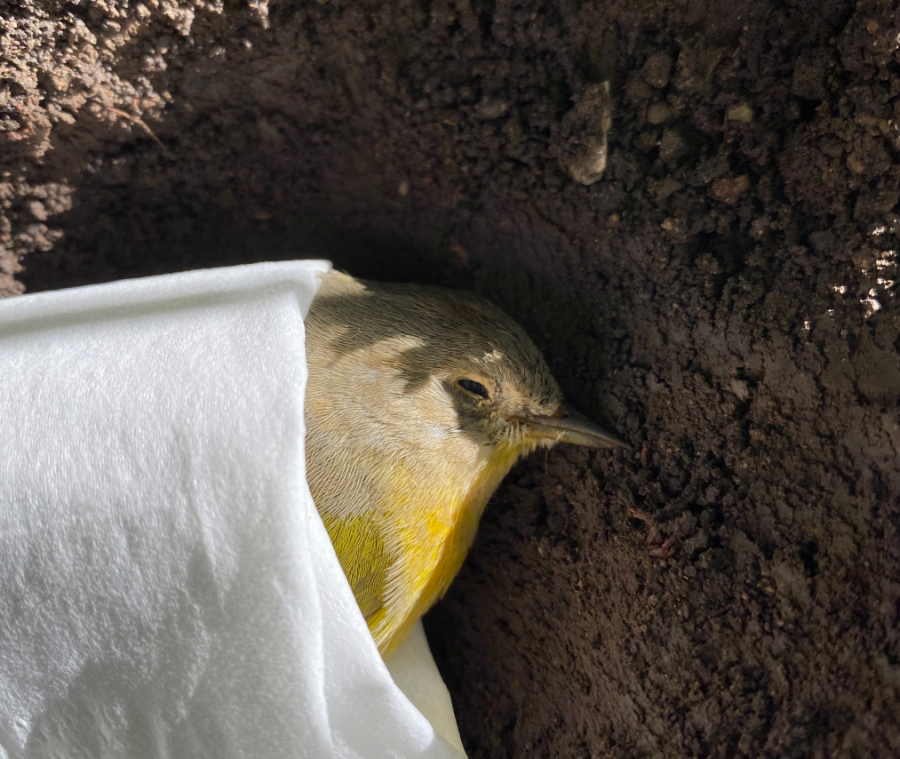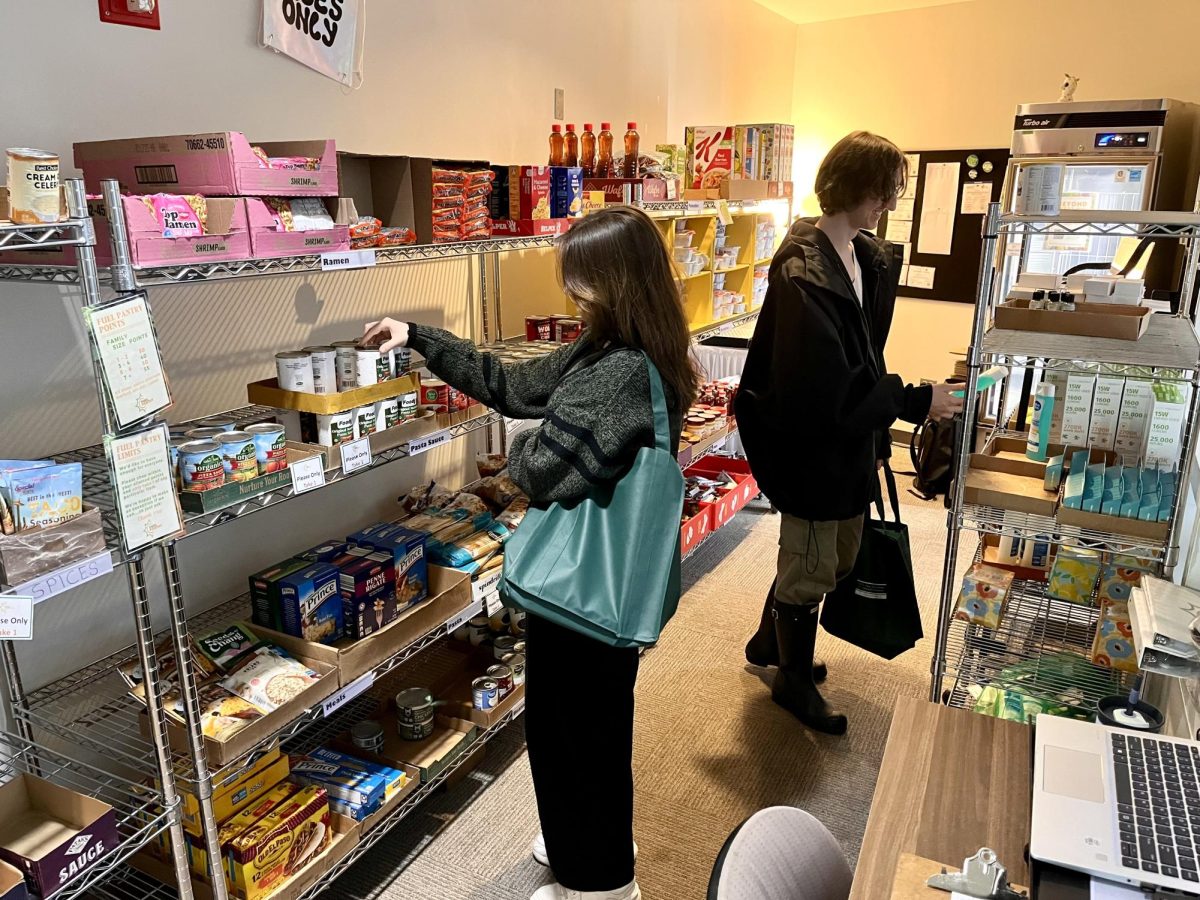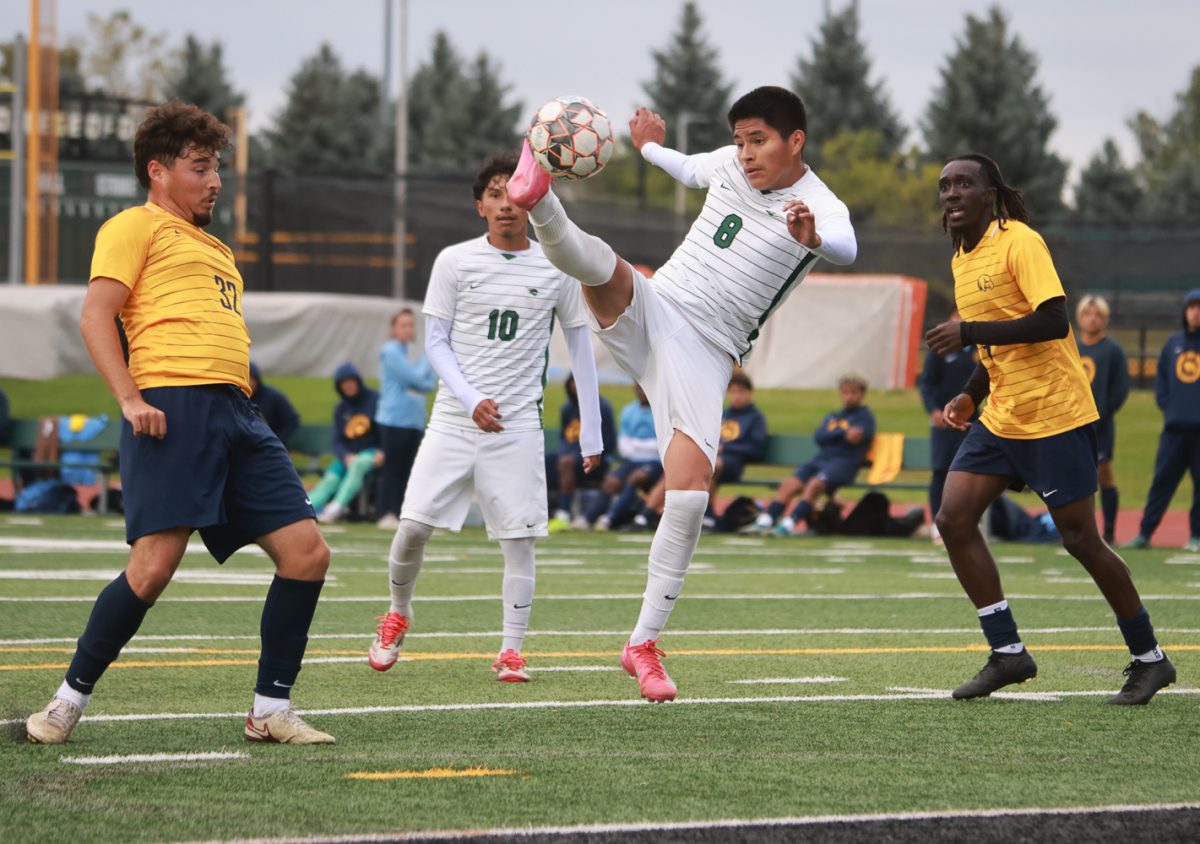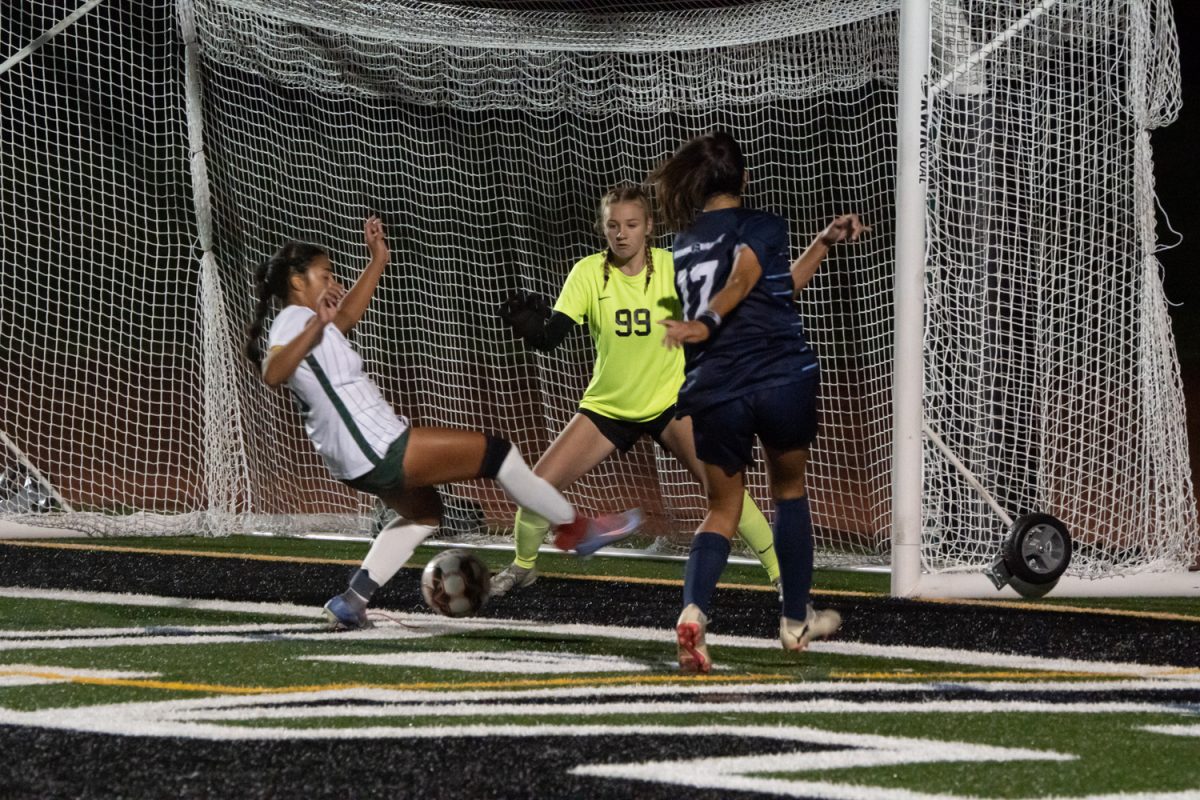Saving The Lives of Local Birds
Bird populations across the country are suffering due to collisions with windows, and COD students and faculty volunteering for the Bird Friendly initiative seek to remedy this issue.
April 24, 2023
Taking a scenic walk in the paths behind the MAC building, students may be distressed to find injured birds lying on the ground. With its wings splayed or its head bent sideways, these delicate airborne creatures will never fly again. They are just a few victims of a much broader issue of birds colliding mid-flight with barely visible glass windows. In a college that hosts large prairie preserves, robust ecological study courses and a chaparral as the mascot, the College of DuPage student body has been active in their concern over this issue.
It started a few years ago when Professor David Ouellette formed the Bird Friendly initiative at COD with a group of faculty. Ouellette is an associate professor of Art History, the chair of the Animal Studies Committee and faculty adviser of the Animal Rights Club.
“I got really tired of walking into work behind the MAC building facing eastward over the pond and finding dead birds every morning,” Ouellette described.
Over the past few years, Ouellette has been steadily working on gathering data and support for this initiative. In 2020, the Visiting Artists Series at COD centered on this issue, with artists and naturalists collaborating to find a solution. One of them was Alice Hargraves, who creates art about nature, such as her exhibit, Last Calls/Pink Noise, about endangered bird species.
“Our original idea was to have Alice design window vinyls to help deter bird collisions on the back of the MAC building,” Ouellette explained. “But as time went on, I realized it was a much more global issue on campus and wanted to do something to address it.”
Many studies have examined the relationship between urbanization into otherwise natural areas that causes birds to collide into windows. One extensive 2017 study published in the Biological Conservation journal observed bird-window mortality rates in 40 colleges across North America. They found 324 bird carcasses, with an average of eight dead birds at each location.
Downtown Chicago hosted one of the most detailed records of bird-window collisions by the Chicago Bird Collision Monitors through the years of 2010 to 2014. Thousands of birds, recorded by species, were found to have died from crashing into skyscrapers. The Chicago Monitors organization has led many Illinois initiatives to solve this issue.
There was even an attempt in 2015 to introduce a bipartisan bill led by one Illinois representative, called the Federal Bird-Safe Buildings Act, that would ensure building materials and designs accommodated the safety of birds.

As this issue continually gains national attention, the efforts of COD students and faculty are also becoming involved. Having received investment from the Willowbrook Wildlife Center and Chicago Bird Collision Monitors, the Bird Friendly initiative has taken new wings. This semester, many COD students from the Animal Welfare Club and ecology majors are working with Ouellette to observe how severe of an issue the bird collisions on campus are.
“I will say that the response from volunteers has been really heartening,” Ouellette said. “It was not too difficult to find enough people to cover all of the routes we need walked weekly to collect the data we were after.”
Every day, at least two students patrol the outside of campus buildings, walking the perimeter in search of birds who fell to the ground after a crash. Biology major Fiona Carruth is one of these volunteers, who was glad to find that there was a group at COD working to protect the birds from this issue. She explained her experiences searching for birds on campus.
“During my monitoring shifts, I’ve found two birds. Both unfortunately were deceased when I found them,” Carruth recalled. “I’ve found birds that collided with windows at COD before the bird monitoring program was established as well.”
The volunteer’s response to the birds depends on the bird’s condition. When Ouellette had found two deceased birds that sparked his concern for this issue, he had wrapped the fragile pine warblers in tissues and buried them.
Carruth also described the organized process for how the students keep records on each bird they find.
“Any birds I find, living or deceased, are marked with information about the species, date [or] time it was found, and where on campus it was found,” Carruth said. “From there, birds are taken to Willowbrook Wildlife Center for further cataloging and treatment if needed.”
Carruth also works as a keeper at the local Willowbrook Wildlife Center, which is an ecological preserve and rehabilitation clinic for wildlife.
“While this is some of my first field experience in ecology, I work as a keeper at Willowbrook Wildlife Center and have prior experience working with songbirds and other species of our native wildlife,” Carruth explained. “Because of this, I am very passionate about the preservation of these species. I’m passionate about the local wildlife and was eager to help improve our campus for their safety. Birds colliding with windows is a huge problem on many college campuses, and I’m glad COD is taking initiative.”
With the data these student volunteers collect from monitoring bird collisions on campus, they hope to pinpoint and map out ‘problem’ areas on campus, such as the MAC building windows above the DeShane Pond.

The Bird Friendly initiative team has also created a bird strike reporting form, so people who find injured birds can tell them about the incident, such as the location of the bird, what species it is, and how badly injured it was.
Ouellette explained that they are collecting data during the busiest migration periods for birds, in spring from April 1 to May 31 and in fall from September to October 31. In the Biological Conservation study done on American college campuses, up to 91% of bird collision fatalities were migratory birds unfamiliar with the buildings of the area they fly through.
At the end of the year, the Bird Friendly initiative volunteers will present their findings to the Space and Planning Committee and Board of Trustees. They hope to find a cost-effective resolution for how campus windows can be redesigned or changed to prevent birds from flying into them.
The redesigns do not have to be complicated or require full reconstruction, as seen in many of the examples given on the Chicago Bird Collision Monitors website. Many high-profile buildings across Illinois, such as the FBI building in Chicago, have implemented simple solutions such as window netting or perforated clear film on the outside of the glass. Carruth mentioned how frosted or fritted glass can also be installed to reduce transparency or painted patterns can be added to existing windows. These solutions ensure that the glass is not invisible to birds, and at the same time, people can still see outside of the windows.
Ouellette further explained the mechanics of why birds are so prone to colliding with windows, stating the two main factors are transparency and reflectivity.
“Transparency is a problem when a bird feels like they can fly through a space, and reflectivity is a problem when a window reflects a tree or other parts of nature that aren’t properly spaced from the building,” Ouellette described. “The solution we are proposing is likely window treatments, likely patterns, dots, or other forms that allow birds to see the window as a flat surface and not a passable space.”
Ouellette mentioned that the easiest solution can be to close your curtains and turn off lights when a room is not occupied. This can even save money by reducing energy usage.
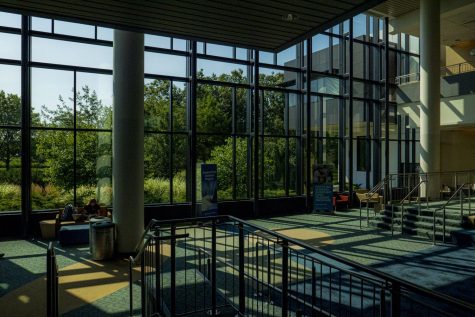
Window walls are a staple of almost every building at COD, adding beautiful architecture and ample sunlight to indoor spaces. However, some of these walls are just continuous glass, like the HSC atrium wall. These represent a danger to birds, especially in the summer when these windows are framed by lush green trees for birds to fly through. One example of a safer design is the Berg Instructional Center’s walls, with alternating glass and solid wall panels, that make it an obvious barrier.
As volunteers of the Bird Friendly initiative work to collect data on the issue and find solutions, Ouellette described the broader implication of how human structures can affect wildlife.
“In my classes I’m always thinking about the ways in which we can discuss how human practices of making art, architecture come into contact with a natural world,” Ouellette explained. “There’s no doubt that human culture and nature aren’t always compatible, but I do believe there is a possibility for a reconciliatory future, in which the lives, behaviors, and needs of animals are taken seriously in human planning. I’d say that is both an ethical and aesthetic issue.”
Ouellette penned an essay for the 2020 Visiting Artist Series, which focused on the bird collision issue. He described the ways that native wildlife and birds that live in the prairies around the COD campus interact with the buildings. They create nests in the alcoves of the MAC building, in student sculptures and fly through the blossoming trees that line walkways.
“These sympoetic moments of co-making present a glimpse into a possible shared future for humans and nonhumans,” Ouellette concluded.
For more research and guidance on how to resolve the issue of bird collisions, visit the COD Library’s list of resources, titled Bird Friendly COD Project, on their website.



